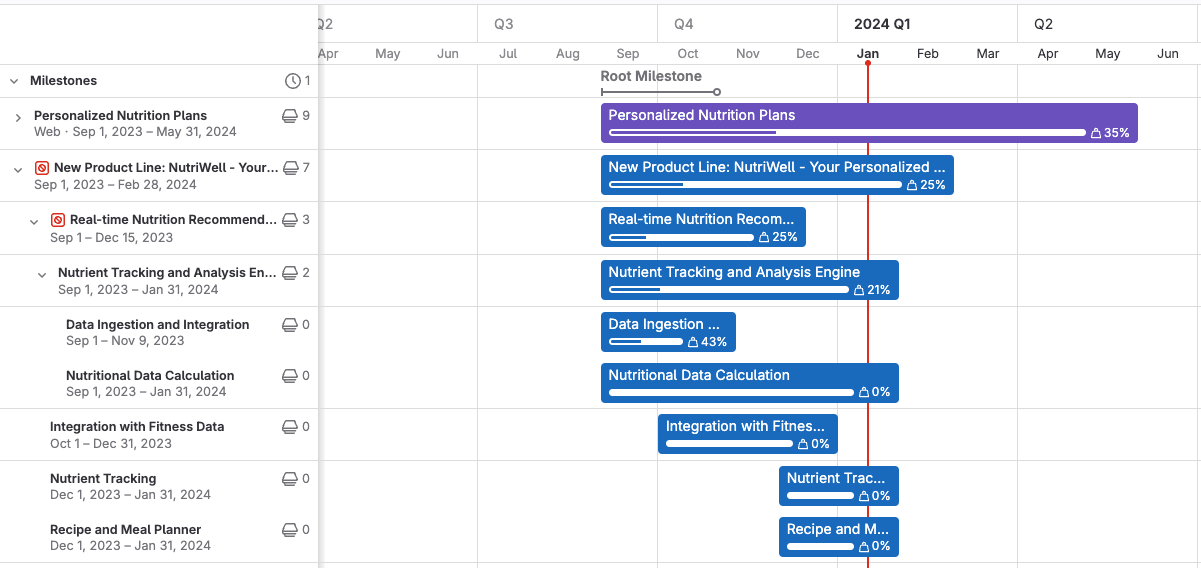Published on: February 6, 2024
3 min read
Unlocking Agile excellence: GitLab Epics for seamless portfolio management
Explore how GitLab's multi-level epics revolutionize Agile portfolio management, offering a structured yet flexible approach for strategic planning and efficient execution.

Effective portfolio management is crucial for the success of organizations in the ever-evolving landscape of software development. Placing the right bets, optimally allocating resources, and mitigating risks are all required for effectively executing on your business strategy.
GitLab's portfolio management capabilities offer a structured yet flexible approach for connecting strategy to execution. In this blog post, we'll explore the advantages of GitLab's multi-level epics and their pivotal role in Agile portfolio management.
Understanding GitLab's multi-level epics
GitLab's multi-level epics allow organizations to organize their work in a hierarchical structure, providing a clear and detailed view of projects and their interdependencies so that teams can make informed decisions, anticipate potential challenges, and streamline their workflows for enhanced efficiency and successful project delivery. Unlike other tools, GitLab allows nesting epics up to seven layers deep across different groups and projects, enabling efficient cross-functional coordination.

Advantages of multi-level epics in portfolio management
The following are four advantages of multi-level epics in portfolio management.
1. Flexible compatibility with Agile frameworks
Epics seamlessly adapt to various scaled Agile frameworks, allowing teams to adjust GitLab to your preferred way of working. Multi-level epics offer a flexible construct to represent different higher-level planning work items with minimal configuration required. This adaptability means teams can efficiently use GitLab for product planning workflows without the need for extensive setup so that they can focus more of their time on strategic planning and less on configuring tools.
2. Granular work breakdown
GitLab's multi-level epics enable organizations to break down intricate projects into smaller, manageable components so that teams can identify smaller iterations, allowing for the faster and more frequent delivery of tangible user value. Higher-level epics provide a strategic overview that can span multiple years, while epics closer to deliverables can typically be completed in a handful of sprints. Epics can be broken down into issues and tasks to tie strategic objectives to more tactical deliverables.

3. Real-time visibility and collaboration
GitLab epics offer real-time visibility into progress, promoting effective team collaboration. GitLab offers unparalleled traceability, with automatic epic progress updates based on downstream DevSecOps activity for connected work items, allowing stakeholders to make informed decisions based on the most up-to-date information, allocate resources effectively, and maintain a proactive approach to managing product timelines.

4. Cross-team planning
Multi-level epics facilitate efficient planning across multiple teams by providing a centralized view of work breakdown and dependencies from teams across your organization, ensuring cohesive collaboration and alignment of efforts. All information for your organization's Agile planning processes and execution of the work lives within a single tool, providing the shared context of how a team's work relates to higher-level strategy.

GitLab’s portfolio management tools, including multi-level epics, ensure that strategic planning aligns seamlessly with the execution of projects, allowing teams to navigate the complexities of software development with precision, efficiency, and a clear focus on overarching business goals.
Ready to harness the full potential of GitLab's multi-level epics and elevate your portfolio management experience? Explore our subscription options on our pricing page, and unlock a host of powerful features designed to fuel collaboration, enhance transparency, and propel your projects toward success.


